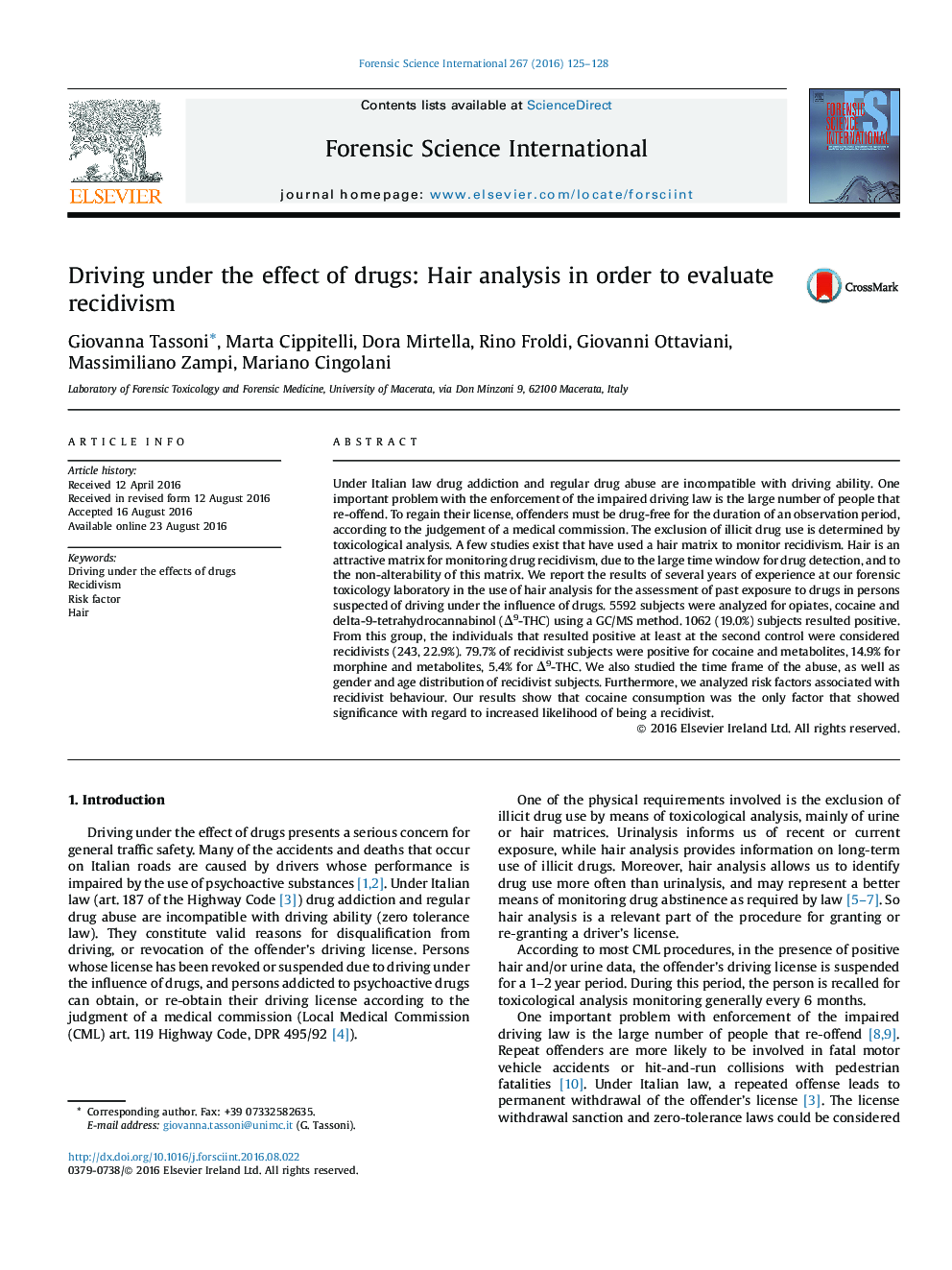| کد مقاله | کد نشریه | سال انتشار | مقاله انگلیسی | نسخه تمام متن |
|---|---|---|---|---|
| 6462639 | 1421983 | 2016 | 4 صفحه PDF | دانلود رایگان |
- We have studied the social relevance of recidivism behavior on driving under the effect of psychoactive drugs.
- We reported our analytical experience in the use of hair analysis for the assessment of recidivism.
- We demonstrated the possible utility of the hair analysis to investigate continued long-term drug use.
Under Italian law drug addiction and regular drug abuse are incompatible with driving ability. One important problem with the enforcement of the impaired driving law is the large number of people that re-offend. To regain their license, offenders must be drug-free for the duration of an observation period, according to the judgement of a medical commission. The exclusion of illicit drug use is determined by toxicological analysis. A few studies exist that have used a hair matrix to monitor recidivism. Hair is an attractive matrix for monitoring drug recidivism, due to the large time window for drug detection, and to the non-alterability of this matrix. We report the results of several years of experience at our forensic toxicology laboratory in the use of hair analysis for the assessment of past exposure to drugs in persons suspected of driving under the influence of drugs. 5592 subjects were analyzed for opiates, cocaine and delta-9-tetrahydrocannabinol (Î9-THC) using a GC/MS method. 1062 (19.0%) subjects resulted positive. From this group, the individuals that resulted positive at least at the second control were considered recidivists (243, 22.9%). 79.7% of recidivist subjects were positive for cocaine and metabolites, 14.9% for morphine and metabolites, 5.4% for Î9-THC. We also studied the time frame of the abuse, as well as gender and age distribution of recidivist subjects. Furthermore, we analyzed risk factors associated with recidivist behaviour. Our results show that cocaine consumption was the only factor that showed significance with regard to increased likelihood of being a recidivist.
Journal: Forensic Science International - Volume 267, October 2016, Pages 125-128
